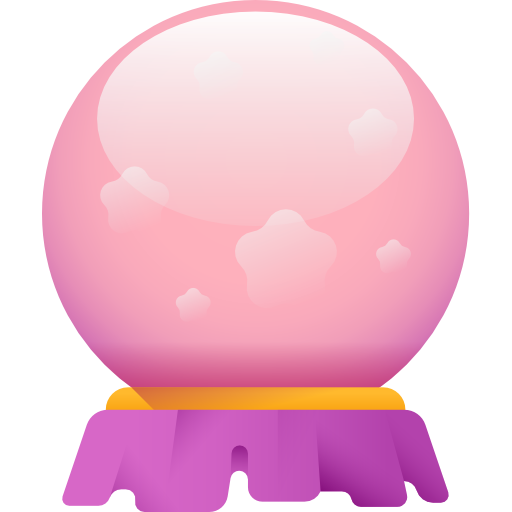By Jennifer Benson
 Halloween, Samhain, and Día de los Muertos: One Veil, Many Traditions
Halloween, Samhain, and Día de los Muertos: One Veil, Many Traditions
As the last leaves of October fall and the world slides into shadow, a powerful stillness begins to hum beneath the surface of things. The air grows colder, the nights longer, and somewhere between the last harvest and the first frost, we enter a threshold — a space between worlds.
Across time and culture, humans have honored this season of transition with festivals that celebrate life, death, and everything that exists in between.
Today, we recognize three major celebrations that all bloom beneath this thinning veil: Halloween, Samhain, and Día de los Muertos (Day of the Dead). Though they share similar timing and a reverence for the dead, their roots and rituals carry distinct energies, each illuminating a unique relationship with the mysteries of mortality.
.png) Halloween: The Modern Masquerade of Shadow and Play
Halloween: The Modern Masquerade of Shadow and Play
Halloween, as most of us know it, is a mix of fright and fun — carved pumpkins glowing on porches, trick-or-treaters roaming the night, and costumes that range from whimsical to wicked. And Hollywood has had a hand in the lore… But beneath the commercial candy and cobwebs, Halloween’s origins trace back to ancient Celtic and Christian traditions.
The word Halloween itself comes from “All Hallows’ Eve,” the night before All Saints’ Day, a Christian observance created to honor saints and martyrs. When Christianity spread across Europe, it often merged with preexisting pagan customs — and so, All Hallows’ Eve absorbed the spirit of Samhain, the Celtic festival that came before it.
In its earliest form, this night was meant to protect the living from wandering spirits. People would disguise themselves, believing that wearing masks or costumes would confuse any restless dead. Fires were lit to ward off darkness, and offerings were left to appease unseen forces. Over centuries, these solemn customs transformed into the playful, community-based holiday we celebrate today.
Modern Halloween is, in many ways, a collective permission slip to explore shadow energy safely. Behind the masks and monsters lies an invitation: to confront our fears, to play with identity, and to laugh in the face of the unknown. It is both a party and a spell — a reminder that even in darkness, there is creativity, curiosity, and courage.
 Samhain: The Witch’s New Year and the Season of Shadows (October 31st/Nov 1st)
Samhain: The Witch’s New Year and the Season of Shadows (October 31st/Nov 1st)
Before there was Halloween, there was Samhain (pronounced Sow-in). This ancient Celtic festival marks the end of the harvest season and the beginning of winter — a time when the sun retreats, the fields lay bare, and the cycle of life turns inward.
For pagans, witches, and mystics, Samhain is the spiritual New Year. It represents the death of the old and the fertile stillness that precedes rebirth. This is the season for reflection, release, and communion with the unseen. It’s believed that during Samhain, the veil between the living and the dead is at its thinnest, allowing ancestors and spirits to visit.
Ancient communities would light bonfires on hilltops to protect their villages, guide wandering souls, and celebrate the turning of the wheel. Families would set a place at the table for deceased loved ones, acknowledging their continued presence in spirit. Divination practices — like scrying, tarot, and dreamwork — were common, as it was thought that messages from beyond were more easily received during this time.
Samhain is not about fear — it’s about honoring endings and embracing transformation. Just as the trees shed their leaves, we are invited to let go of what no longer nourishes us. The darkness of winter is not a punishment, but a womb — a place of gestation and quiet creation.
To celebrate Samhain today, one might:
- Create an ancestor altar with candles, photos, and offerings.
- Perform a ritual of release — writing down what you wish to let go of and burning it.
- Practice intuitive divination to receive messages from your higher self or spirit guides.
- Light a candle and give thanks to those who walked before you.
Samhain reminds us that death is not the end — it is a doorway, and every ending births a new beginning.
 Día de los Muertos: The Celebration of Life Through Death (October 26th-November 6th)
Día de los Muertos: The Celebration of Life Through Death (October 26th-November 6th)
Across Mexico and some of Latin America, Día de los Muertos (Day of the Dead) is one of the most vibrant and heartfelt celebrations of the year. Though often associated with Halloween due to its timing (November 1st and 2nd), its roots are entirely unique — an intricate blend of Indigenous Mesoamerican traditions and Catholic observances. (Depending on the celebrations/regional traditions it can last from October 26th-November 6th) Each day is to honor and recognize a different set souls/ancestors.
Long before colonization, Indigenous cultures such as the Aztec, Maya, and Toltec believed that death was a natural continuation of life. They honored their ancestors through rituals, altars, and offerings — not to mourn them, but to celebrate their ongoing spiritual presence. When Spanish missionaries introduced All Saints’ Day and All Souls’ Day, these traditions fused, creating what we now know as Día de los Muertos.
The heart of this holiday is the ofrenda — a beautifully decorated altar filled with candles, marigolds, food, sugar skulls, and photos of departed loved ones. The marigold (cempasúchil) is known as the “flower of the dead,” its bright orange color and scent said to help guide spirits home. Families visit cemeteries, share meals, play music, and tell stories, transforming mourning into a radiant celebration of love and memory.
Unlike Halloween’s flirtation with fear or Samhain’s somber introspection, Día de los Muertos is a celebration of continuity — the knowing that our loved ones never truly leave us. The dead are not ghosts to be feared, but companions to be welcomed. The veil may thin, but it does so not for haunting — rather, for homecoming.
 The Shared Thread: The Thinning of the Veil
The Shared Thread: The Thinning of the Veil
Though these three traditions differ in tone, geography, and symbolism, they all revolve around a central truth: this is the season when the veil between worlds grows thin. Whether we dress up, light candles, or build altars, we are engaging with the same sacred energy — the awareness of mortality, the honoring of spirit, and the acknowledgment that the line between seen and unseen is much softer than we think.
Halloween teaches us to play with our fears and shadows.
Samhain teaches us to honor endings and trust the cycles of rebirth.
Día de los Muertos teaches us to celebrate life through remembrance and love.
Each tradition reminds us that death is not a void but a continuum — an essential part of the great spiral of existence.
 Closing Thoughts: Living Between Worlds
Closing Thoughts: Living Between Worlds
As you move through this season, consider how you might bring intention to your own celebration. Light a candle for those you miss. Reflect on what you’re ready to release. Laugh, dance, and let yourself be transformed by the mystery that surrounds us.
The veil may thin only once a year, but the connection remains constant — in every heartbeat, every breath, every whisper from the other side reminding us that love, energy, and spirit never truly die.
So whether you celebrate Halloween with costumes and laughter, Samhain with ritual and reflection, or Día de los Muertos with music and marigolds — know that you are participating in something ancient and sacred. The dance between life and death is eternal… and this is its most magical season.
